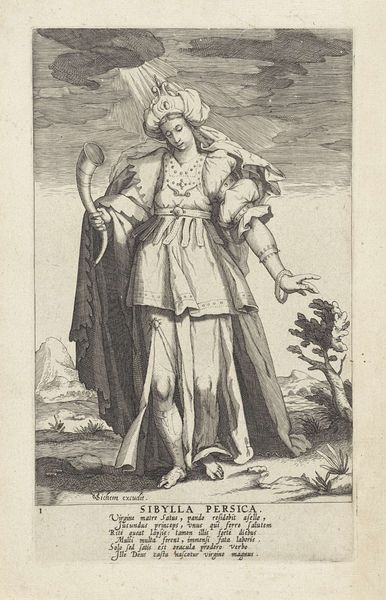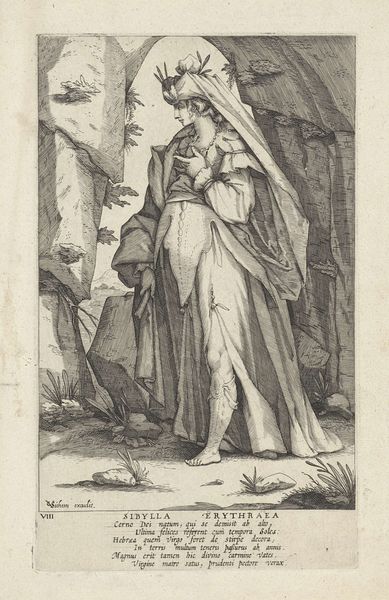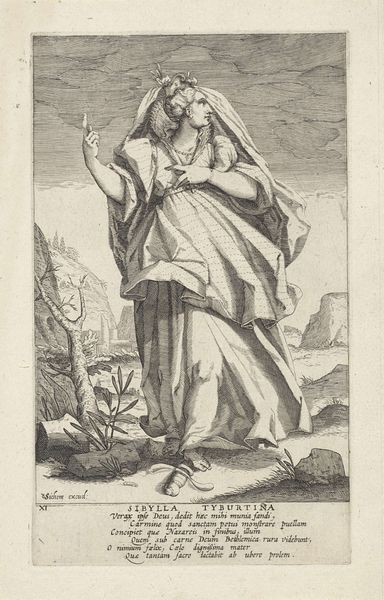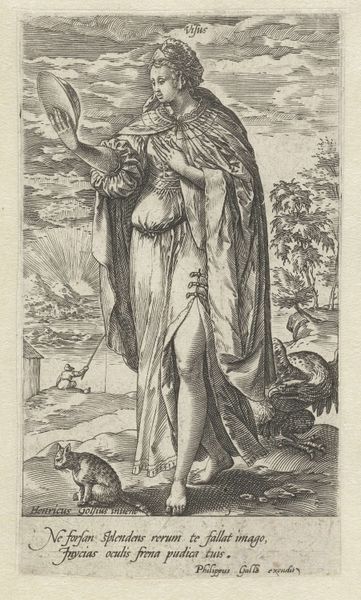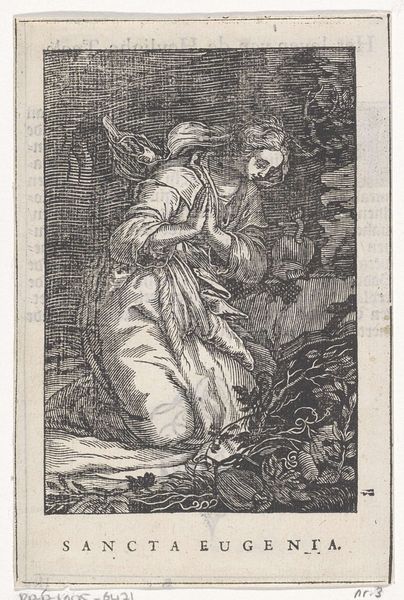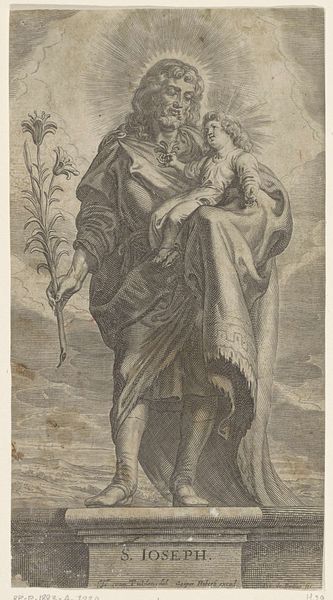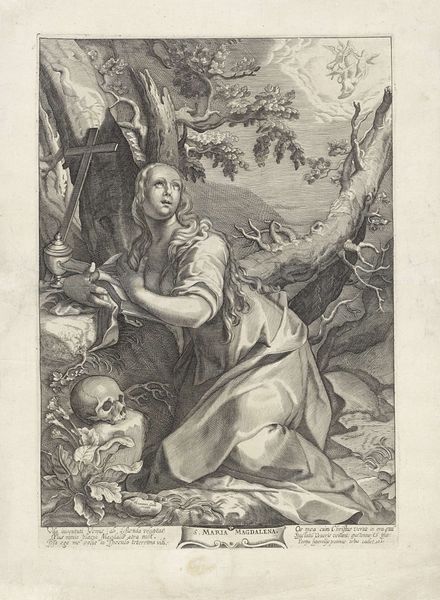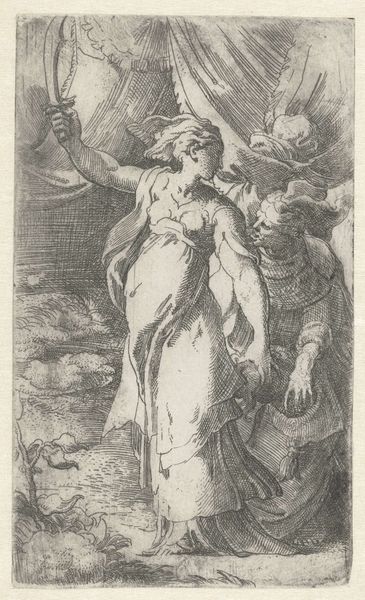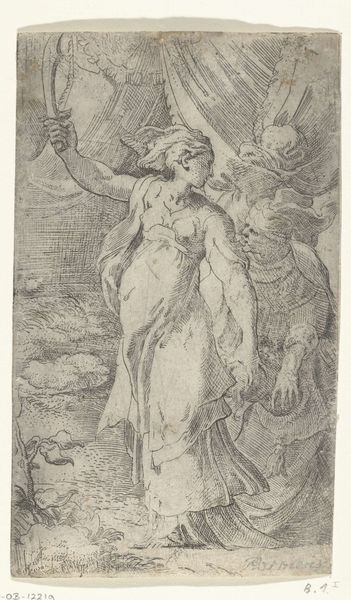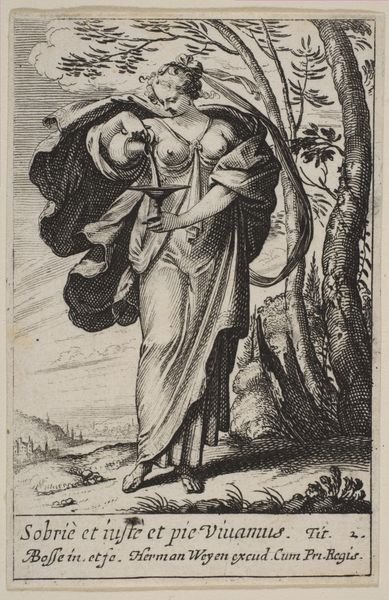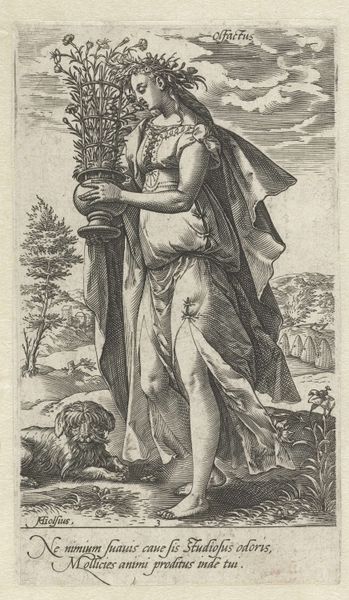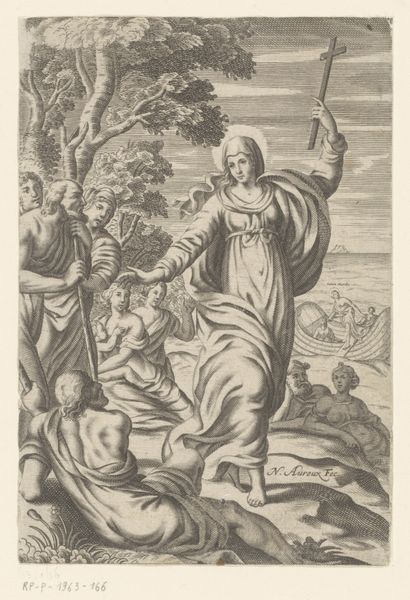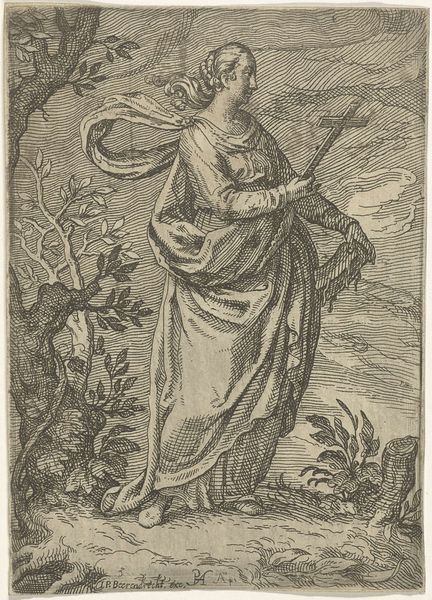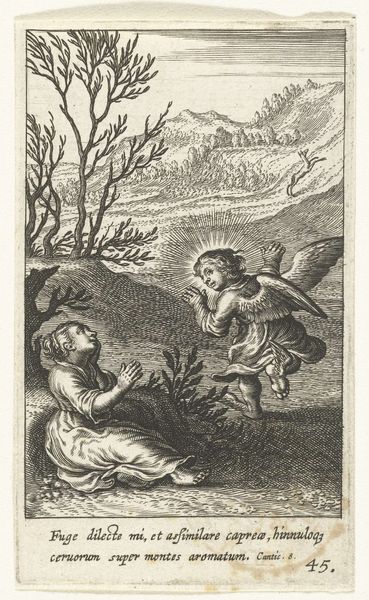
print, engraving
#
portrait
# print
#
figuration
#
line
#
history-painting
#
northern-renaissance
#
engraving
#
realism
Dimensions: height 230 mm, width 139 mm
Copyright: Rijks Museum: Open Domain
Sibylla Europaea was produced by Christoffel van Sichem I, sometime between 1546 and 1624, through the method of wood engraving. This process involves carving an image into the surface of a wood block, then inking the block and pressing it onto paper. The choice of wood as a medium has greatly influenced the artwork’s aesthetic. Wood engraving allows for fine lines and intricate detail, which you can observe in the delicate rendering of the Sibyl’s robes, headdress, and the surrounding landscape. The labor-intensive process leaves a tangible trace on the artwork. The artist's hand is evident in the meticulous carving, which would have required precision, patience and skill. Wood engraving played a vital role in disseminating images and texts during the early modern period. It was an essential technology that allowed for the relatively affordable production of prints, making art accessible to a wider audience. The creation and distribution of prints like this one reflect the burgeoning print culture and expanding market for art during this period. The work involved in this mode of production highlights how art and labor were deeply intertwined.
Comments
No comments
Be the first to comment and join the conversation on the ultimate creative platform.
